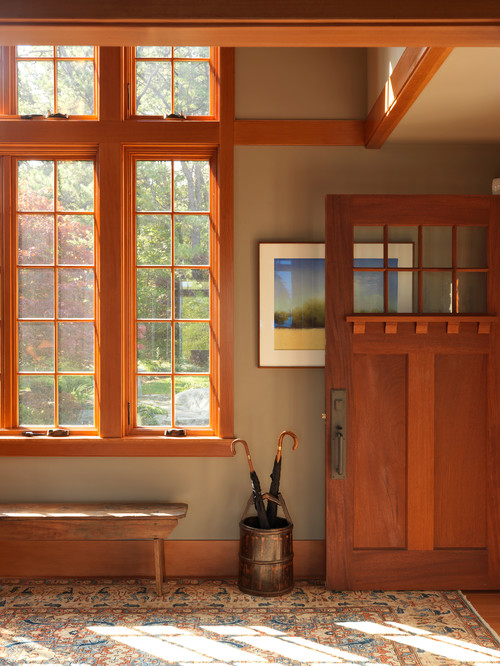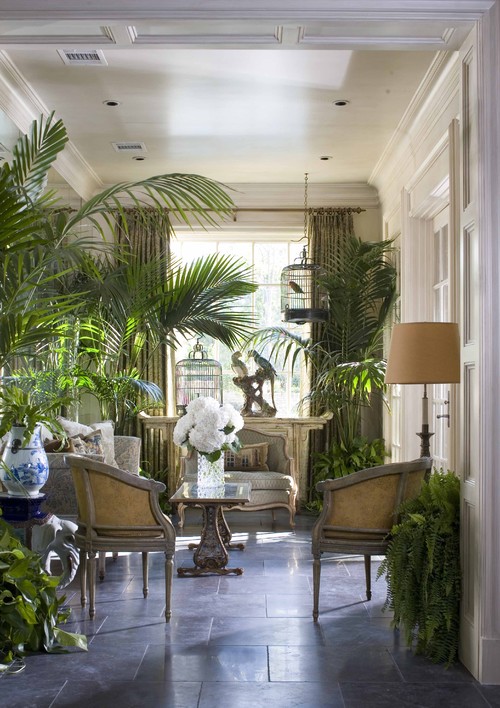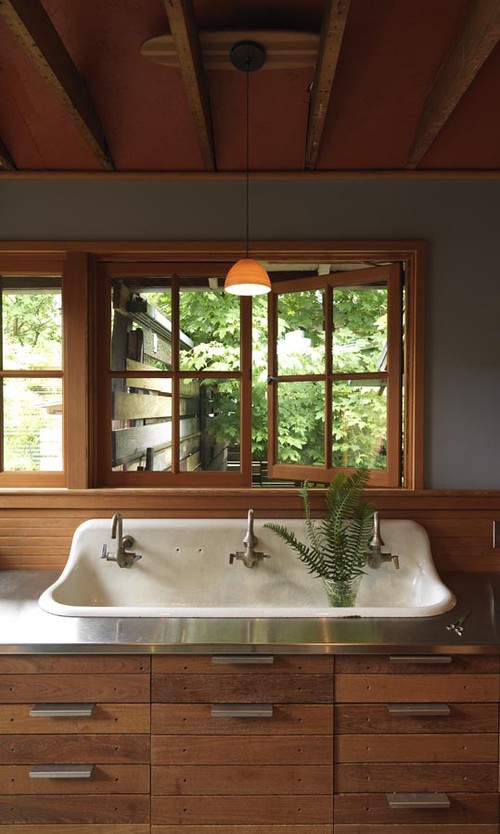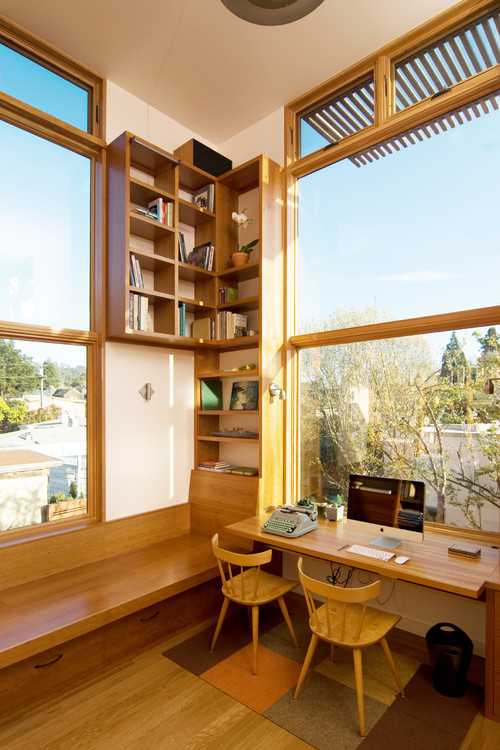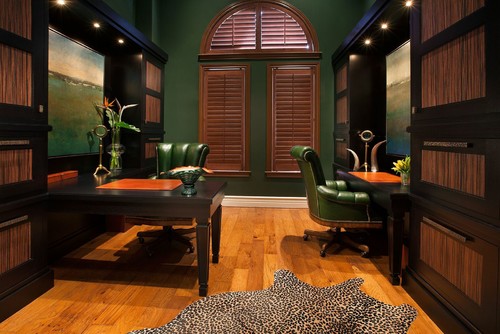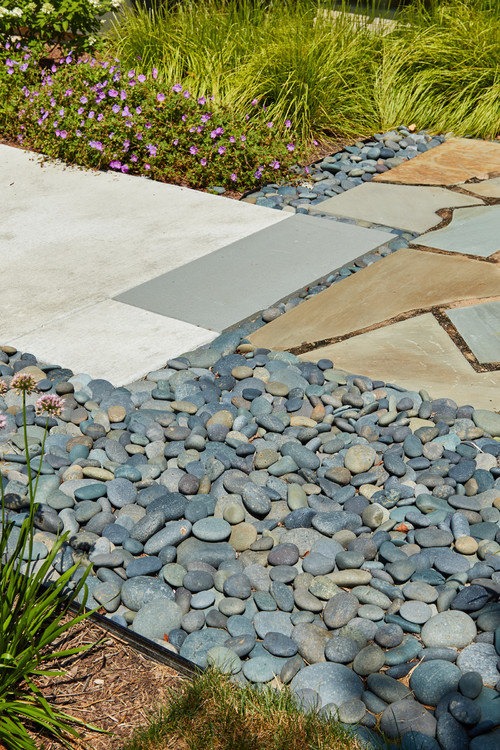What Does It Really Mean If a Home Is ‘Inspired by Frank Lloyd Wright’?

Photo courtesy of Jim Brady / domusstudios architecture via Houzz
To own a Frank Lloyd Wright home is to possess a piece of history. As the preeminent American architect of our time, Wright had an indelible impact on design worldwide.
So while you may not be able to afford an actual Wright-designed home (they’re limited, of course, and tend to cost millions of dollars), his work continues to influence generations of architects. And that means you could happen upon a home that embodies Wright’s design ethos.
“Homes inspired by Wright weren’t built by the architect as his last residential design was in 1959,” notes Martie Lieberman, a real estate adviser with Premier Sotheby’s International in Sarasota, FL. Yet many architects and builders continued to build homes using his ideas.
“They took his appealing design elements and created Wright-inspired houses that are modern in style and feature elevated levels of craftsmanship,” she adds.
For some help identifying key features of a Wright-inspired home, read on.
Wide, flat roofs
Wright was a strong proponent of the Prairie School of design (Wright called his designs Usonian), which strives to erect structures that mesh naturally with their surroundings.
One of his main themes was plasticity, which Beverly Solomon of the eponymous design firm describes as “the flow of form and function blending with the nature around it.”
A home that’s Wright-inspired will usually be a single story high and mimic the strong horizontal lines of a prairie’s landscape, often with a roof that includes deep overhangs.
Arts and Crafts lines
Photo by Carpenter & MacNeille
Wright’s Prairie School of design is a cousin to the Arts and Crafts style of home, so houses in this latter style will appear similar to Wright’s aesthetic—think simple lines, lots of wood detailing, and rooms flooded with light from banks of windows.
Arts and Crafts properties were the forerunners here. Prairie style followed, though both feature similar design elements.
Greenery as the focal point
Wright wanted his homes to be at one with nature, so he arranged them into landscapes with waterfalls, rock outcroppings, and other impressive surroundings.
Homes that highlight plants or offer vistas of greenery outside are right on target with Wright’s thinking. A home might also feature Wright-like inspiration if there’s a natural green wall or one that incorporates water, wood panels, or even rocks.
Master trimwork
Beautifully crafted woodwork, floors, and other details made from natural materials also signify a home that pays homage to Wright.
Cypress was a favored wood choice and was often used to create intricate panels, shelves, and molding that flowed throughout his rooms, tying them together.
Leaded casement windows
Photo by Joanne Palmisano Design
“In the early days of Frank Lloyd Wright’s design work, glass was just being manufactured in plate form at an affordable price,” explains Solomon.
Wright made great use of the material, including in doors, skylights, and rows (and rows) of symmetrical clerestory windows (rows of windows above eye level). Practical casement windows, which are attached to the frame with one or two hinges, were also much in favor.
Gorgeous stained glass
Wright was also a pioneer in his use of stained glass, referring to his windows as “light screens” and filling them with geometric shapes and splashes of color. Homes inspired by Wright may feature stained-glass designs, often as accent windows.
Smart built-ins
Photo by Kerstin Hellmann Architecture
Wright was ahead of his time with his adherence to open-plan homes.
Clean sightlines were a must, which meant he used built-ins with abandon. If the home you’re considering has benches, cubbies, storage, and more, it’s likely inspired by the master’s work.
Muted palette
Nature was Wright’s muse, so don’t look for pastels or neons if you’d like a home inspired by the famous architect. Taking his cues from the great outdoors, Wright was known for muted natural hues—forest green, browns, and yellows, especially in his Prairie School homes.
Stones, not grass
Wright-inspired landscaping won’t waste water or use chemicals on a huge expanse of green turf. Instead, the architect was a fan of xeriscaping, which is definitely in vogue these days since it requires little to no water.
Homes that are surrounded by native and drought-tolerant plants, grasses, stones, and pavers are all in keeping with Wright’s design sensibilities. And, just as meaningfully, they are modern and appropriate for our times.
The post What Does It Really Mean If a Home Is ‘Inspired by Frank Lloyd Wright’? appeared first on Real Estate News & Insights | realtor.com®.


